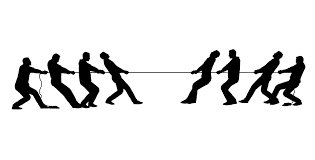Nature of Science
Properties of Matter
Physical and Chemical Properties/Changes
Atoms, Elements, Compounds and Mixtures
Forces
100
Variable (Independent or Dependent) that is usually found on the x-axis of a graph.
What is the independent variable
100
This describes the amount of matter in an object.
What is mass?
100
True or False: Observing a physical property of a substance changes the identity of the substance. Explain.
What is False.
Explain your answer
100
The smallest particle that a substance can be divided into and still be the same substance.
What is an atom
100
What does friction do to an object's motion?
slows it down
200
Jalen is conducting an experiment to determine whether temperature affects how fast earthworms move. What is the DEPENDENT variable?
What is speed of earthworm (how fast they move)
200
A graduated cylinder contains 40 ml of water. After a marble is dropped into the cylinder, the water level rises to 48ml. What is the volume of the marble?
What is 8 ml
200
Vinegar reacts with baking soda.
Physical or Chemical change?
What is chemical change.
REACTS!
200
A combination of elements and/or compounds that are NOT chemically combined is called a ________________.
What is a mixture.
200
Given an example of a non-contact force
Gravity
Electrical Force
Magnetic Force
300
A type of investigation that allows scientists to control variables is a(an) __________________________
What is an experiment
300
The density of water is 1 g/ml (or 1 g/cm3). If another object has a density of 0.6 g/ml will it sink or float?
What is float.
Density greater than 1 = sink
Density less than 1 =float
300
Carbon combines with oxygen to form carbon dioxide gas.
Physical or chemical change?
What is chemical change.
FORMS!
300
Name the 2 subatomic particles that are located in the nucleus of an atom.
What are the proton and neutron.
Do you also know:
Where is the electron located?
300
In tug of war, if one side wins, what type of force was present?
Unbalanced force
400
True or False: Scientific theories can change over time.
What is True.
Do you also know:
Why would a theory change over time?
400
An object has a mass of 360 g. The volume of the object is 60 cm3. What is the density of the object?
What is d=m/v
d=360g/60cm3
d=6g/cm3
400
Water breaks down into hydrogen and oxygen gas.
Physical or chemical change?
What is chemical change
BREAKS DOWN!
400
Most elements on the periodic table of elements are:
metalloids, metals or nonmetals?
What are metals.
Zigzag line are the 6 metalloids.
Right side are nonmetals (19)
Left and middle are the metals.
400
Because the moon has less mass then the Earth, what property of an object will be different on the moon?
The object's weight
500
Experiments should be repeated multiple times by the original investigator. This is known as _________________
What is repetition.
500
Name 2 physical properties of aluminum foil.
What is mass, volume, density, thermal conductivity,
luster (shine), malleability
500
What are 2 signs that a chemical change has occurred?
What is
- change in color,
- gas produced (fizzing, bubbling, foaming),
- odor produced,
- precipitate forms
- change in temperature (energy changes form)
500
What 4 things are found on each square of the periodic table?
Atomic number - what is this?
Atomic mass - what is this?
Chemical symbol - give an example
Chemical name - give an example
500
Explain how
CH4 + 2O2 = CO2 + 2H2O
demonstrates the Law of Conservation of Mass
The type and # of atoms in the reactants are the same as the type and # of atoms of the products.
Mass of reactants = Mass of products